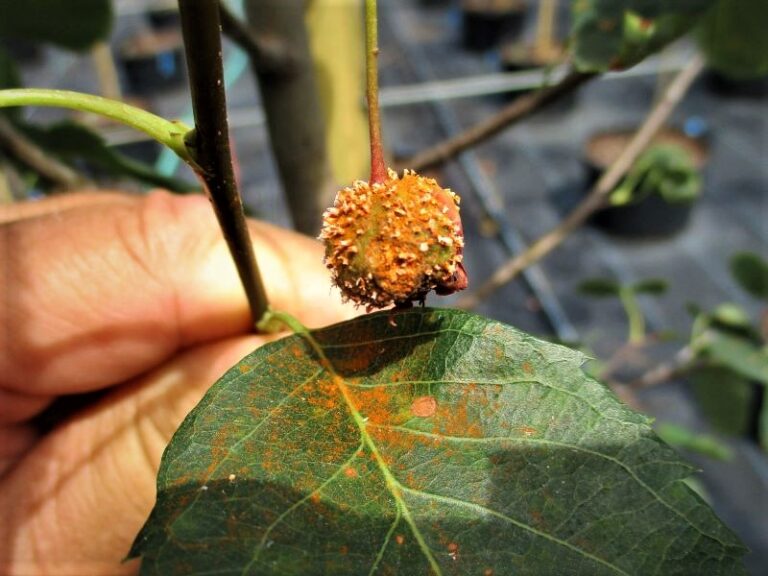Rust Diseases (Gymnosporangium spp.)
Overview:
- Cedar-Apple Rust: G. juniperi-virginianae
- Cedar-Hawthorn Rust: G. globosum
- Cedar-Quince Rust: G. Clavipes
- Found on Juniperus host – late fall through early spring
- Found on Rosaceous hosts – early spring through late fall
- Produce two or more types of spores during the growing season
- Cannot grow in absence of a living host
- Spores are found in “rusty” aecia/ aecial projections (yellow, orange, and brown) pustules on leaves, distorted stems, and fruit
- Impacts aesthetic appeal / plant vigor
Management:
Cultural Practices:
- Reduce humidity and leaf wetness
- Avoid overhead irrigation
- Space plants to lower humidity
- Use fans and winds
- Use resistant plant materials
- Frequent scouting and purchasingdisease-free plants
- Remove the alternate host
- Sanitation
- Remove infected leaves and debris
- Discard or isolate infected plants
- Reduce plant stress
- Reduce shade
Materials:
- Contact fungicides:
- Chloronitriles [M05]: Chlorothalonil
- Dithiocarbamates [M03]: Mancozeb, Maneb
- Systemic fungicides:
- {DMI} Triazoles [3]: Myclobutanil, Propiconazole, Triadimefon, Imidazole
- Thiophanate methyl [M1]
- Considerations:
- QoI – [11] fungicides can cause phytotoxicity to some Malus / Crataegus varieties. Check label before use. Trial small area first.
Biorationals:
- Bacillus amyloliquefaciensstrain D747*
- Bacillus pumilus
- Bacillus subtilis
- Reynoutria sachalinensis
- Swinglea glutinosa
- Streptomyces lydicus





Disclaimer – Materials do not cover all possible control scenarios and are intended for licensed professionals. Tradenames do not imply endorsement and are used as examples. You must strictly follow the label for each compound prior to use. Rutgers is not responsible form is used materials or damages thereof. The label is the law. Labels will provide detailed information on use and restrictions. Additionally, application intervals, compatibility, surfactant use, PHI, PPE, important and other key information is described in detail. Always discuss treatments with your local agents. Note: Neonicotinoids can only be legally applied in commercial agriculture settings by licensed applicators. Guidelines and recommendations made in this presentation are specific to the state of New Jersey.
